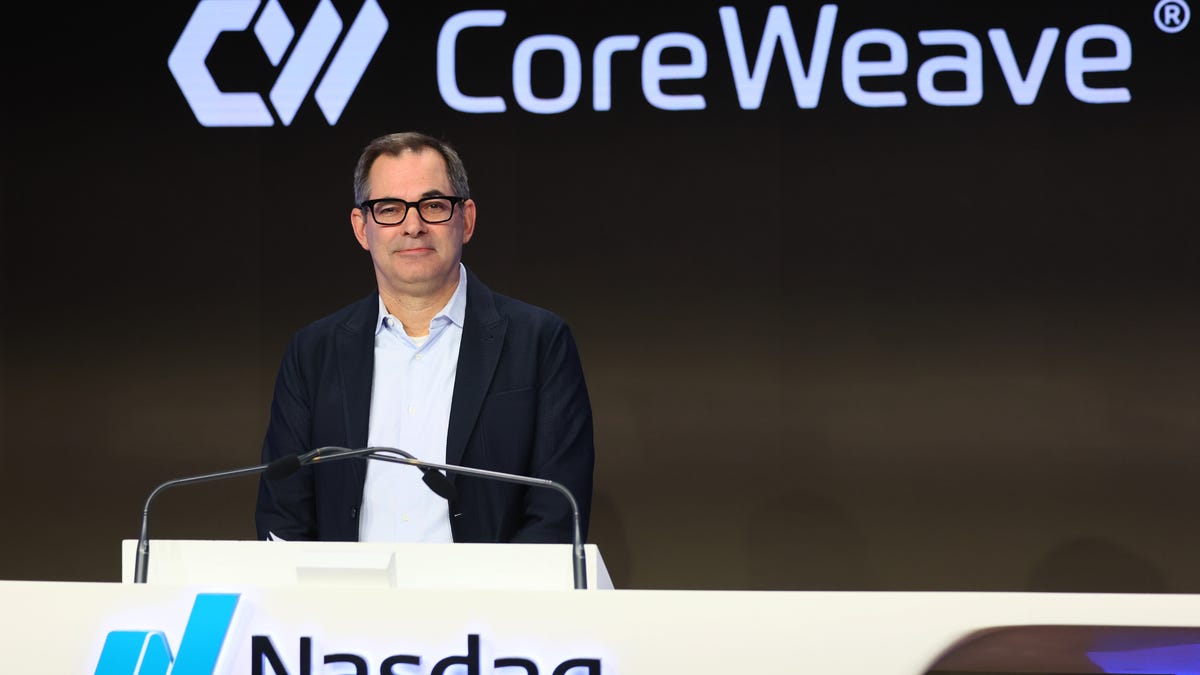Nvidia-Backed CoreWeave’s AI Costs Trigger Stock Plunge: Investor Concerns Mount
CoreWeave, the cloud computing startup backed by Nvidia, saw its stock plummet 13% this week after revealing unexpectedly high costs tied to its artificial intelligence infrastructure expansion. The disclosure, made in a regulatory filing on Tuesday, has ignited concerns about profitability timelines for AI-focused firms and sent shockwaves through the tech investment community. Analysts now question whether the AI gold rush can justify its mounting expenses.
The High-Stakes AI Bet That Backfired
CoreWeave’s financial disclosures show the company spent $2.3 billion on AI infrastructure in the past year—a 400% increase from 2022. This spending surge comes as the company races to build data centers capable of handling generative AI workloads for clients including OpenAI and Anthropic. While revenue grew 280% to $1.1 billion during the same period, operating losses widened to $420 million.
“The numbers reveal a troubling disconnect between AI hype and economic reality,” said tech analyst Miranda Cheng of Bernstein Research. “CoreWeave is burning cash to capture market share, but there’s no clear path to profitability when infrastructure costs are growing faster than revenue.”
Key financial pressures include:
- $1.8 billion in GPU purchases from Nvidia
- $320 million in data center construction costs
- Energy expenses up 170% year-over-year
- Research and development costs doubling to $210 million
Market Reaction and Sector-Wide Implications
The stock decline erased $4.2 billion from CoreWeave’s market valuation, with ripple effects across the AI sector. Nvidia shares dipped 2.3% on the news, while other AI infrastructure providers saw moderate sell-offs. The episode highlights growing investor sensitivity to AI-related expenditures after years of enthusiasm.
“This is a wake-up call for the industry,” noted venture capitalist Rajiv Sodhi. “We’re moving from the ‘growth at all costs’ phase to a more measured evaluation of unit economics. Companies will need to demonstrate how they’ll recoup these massive infrastructure investments.”
Recent data from PitchBook shows AI startups raised $42 billion in 2023—but nearly 60% went toward computing and energy costs rather than product development or customer acquisition. This capital allocation pattern raises sustainability questions as interest rates remain high.
Why CoreWeave’s Struggles Matter for AI Investors
As one of Nvidia’s closest partners and a bellwether for AI infrastructure demand, CoreWeave’s financial challenges carry disproportionate significance. The company operates at the epicenter of three critical trends:
- The GPU arms race: Securing enough Nvidia H100 chips remains a $40,000-per-unit bottleneck
- Energy intensity: AI data centers can consume 50x more power than traditional facilities
- Capacity utilization: Many providers struggle to maintain >60% usage rates for AI-specific hardware
Industry benchmarks suggest AI cloud providers need 75-80% utilization rates to achieve profitability—a threshold few have reached. CoreWeave’s filing indicates it’s currently operating at 58% capacity across its 14 data centers.
Diverging Views on AI’s Economic Viability
Bullish analysts maintain that current losses represent necessary investments in tomorrow’s infrastructure. “You can’t judge AI economics through a legacy IT lens,” argued tech fund manager Derek Wu. “We’re building the equivalent of interstate highways for computing—the payoff comes later when traffic flows.”
However, skeptics point to troubling parallels with past tech bubbles. The AI sector’s $280 billion in projected 2024 spending would exceed the peak years of dot-com infrastructure buildout when adjusted for inflation.
Notable contrasts emerge when examining CoreWeave’s position versus established cloud providers:
| Metric | CoreWeave | AWS/Azure/GCP |
|---|---|---|
| Gross Margin | 22% | 35-45% |
| CapEx/Revenue | 210% | 25-35% |
| Customer Concentration | 3 clients = 68% revenue | Top 10 = 15-20% |
The Road Ahead for AI Infrastructure Players
CoreWeave’s next moves will likely set precedents for the industry. The company has three potential paths forward:
- Cost rationalization: Slowing expansion plans to improve unit economics
- Price increases: Passing infrastructure costs to enterprise customers
- Strategic pivots: Focusing on higher-margin AI services
Market intelligence suggests the company is exploring all three options simultaneously. Recent job postings reveal new positions for “AI Cost Optimization Engineers,” while client contracts now include energy surcharges of 8-12%.
What Investors Should Watch Closely
Several upcoming developments could determine whether CoreWeave’s stock plunge represents a buying opportunity or early warning sign:
- Q3 earnings report (November 7) for revised guidance
- Nvidia’s next GPU architecture launch (expected Q1 2025)
- Potential DOE grants for energy-efficient AI infrastructure
- Emergence of cheaper AI chip alternatives from AMD and Intel
For now, the episode serves as a reminder that even in transformative technological shifts, fundamental business principles still apply. As investors digest these developments, many are revisiting their AI investment theses with renewed focus on sustainable economics rather than sheer growth metrics.
Want to stay ahead of AI market trends? Subscribe to our weekly tech investment briefing for expert analysis on emerging opportunities and risks.
See more Business Focus Insider Team

